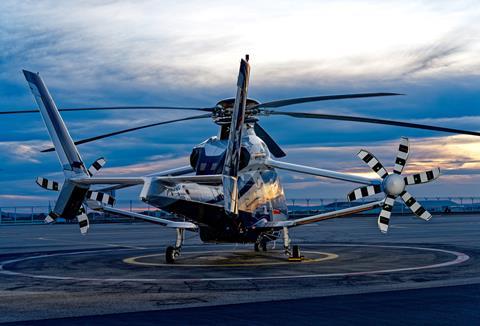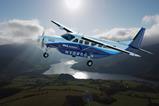Bruno Even, Airbus Helicopters chief executive, maintains that European industry must collaborate on an indigenous future rotorcraft for its domestic customers, despite counterpart Leonardo’s decision to partner with Bell for a key NATO-led initiative.
“Our view is that what is really key for the long term is to have a European solution for a European programme,” said Even, speaking to FlightGlobal at an event in Marseille to present the airframer’s Racer high-speed demonstrator.

Even cites the success of the NH Industries consortium of Airbus, Leonardo and GKN/Fokker in developing the NH90 heavy-twin. “It is a combined effort delivering a fantastic programme – it is something we still have in mind [for the future].”
Through the Next Generation Rotorcraft Capability (NGRC) programme, a group of six European NATO members are currently engaged in a process to define a future vertical-lift solution for the coming decades.
As part of that process, industry was invited to submit bids for the project’s platform concept study phase by the end of April.
Airbus had been seeking to collaborate with Leonardo on NGRC, but the Anglo-Italian firm in February instead announced it was working with Bell on a joint tiltrotor-based submission.
Although it is “the beginning of the story” for the NGRC project, Even believes the continent’s industry must continue to collaborate to avoid a situation where it cannot “propose the solution” to address the needs of domestic customers.
“That is why as Airbus we want to bring a European solution,” he adds.
Even says the compound architecture demonstrated on the Racer “is the foundation of what we have proposed for NGRC”, but stresses that the process will be guided by the customer requirements.
“If the focus is on speed, we could go for this [Racer] concept, but we will stay open – our role is to propose a solution for our customers.
“We will bid on what is required at an operational level.”
Baseline requirements for the NGRC platform call for a rotorcraft with an optimum cruise speed “in excess” of 220kt (410km/h) but no lower than 180kt – roughly the highest speed that could be met with a conventional helicopter.
Since the Racer’s maiden sortie on 25 April, the compound rotorcraft has hit speeds of around 165kt, well on the way to its 220kt target.
But Even says that although the Racer technology forms the basis of its NGRC proposal, any eventual programme is unlikely to be identical to the demonstrator.
“We are open during the flight-test campaign to the feedback from military customers to adjust the concept,” he adds.
At the outset of the Racer project, Airbus saw potential interest from both civil and military customers. However, Even believes the latter is more likely to adopt the high-speed technology first.
“I think if it has to start somewhere it will start with the military – that’s my reading of the market today.”
The NATO Support and Procurement Agency expects to award contracts in July, each worth €5.7 million ($6.1 million), to three bidders, leading to the delivery of the concept studies in late 2025.































